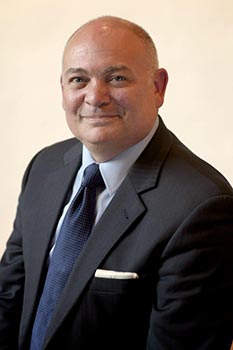 Reforecasting Reimagined
Reforecasting Reimagined
By Carl Hamm
The American Alliance of Museums annual meeting is usually a time when colleagues reunite for an invigorating week of professional development and camaraderie, yet this year’s meeting was forced online like so much of our lives today. This year, Alexander Haas was honored to lead the session Reforecasting Reimagined during a full day of sessions organized to address new approaches required by current circumstances, sponsored by AAM’s Development and Membership Professional Network.
Among the major challenges that museums are facing in response to the pandemic is that of forecasting revenue projections for current and future-year budgets. This is the result of a confluence of challenges that have never come together in such a unique way, including the unexpected timing and immediacy with which museums were forced to close, the resulting loss of earned and contributed revenue, employee health issues, and speculation over whether donors and members will cut back or redirect their giving to other priorities.
Here are four recommendations to consider as you approach the exercise of reforecasting:
Don’t Make Assumptions About Your Donors
Given the recent volatility of the economy, it would be natural to assume that donors may not have the discretionary income to invest in philanthropy as they have in the past. Also, with the heavy emphasis on health and human services organizations in recent days, it might be natural to assume that donors might redirect their giving toward other priorities. In challenging times, donors tend to focus on the priorities they value most. Based on their past giving, those priorities include your museum. Don’t automatically assume that your donors are going to cut back or stop giving until you’ve communicated with them.
Take a Measured Approach
Take a deliberate approach to reforecasting based on an analysis of your potential renewals and cautiously optimistic estimates based on donors’ historical giving. The result will be much more realistic than an across-the-board cut using an arbitrary percentage or historical data from the years following the last economic downturn. It will require more work in the short term but is worth the effort.
Funding is Tied to Programs
Apart from general, upper-level and corporate memberships and special events, a significant portion of a museum’s annual giving is directly tied to institutional programming. Be sure that sentiment is represented in reforecasting discussions. Make sure that those making institutional decisions about the budget realize that if specific programming that has been historically supported by a foundation or corporate sponsor is eliminated or dramatically reduced, so is the potential for that funding being renewed.
Revise as You Go
Given the lack of credible information about the future, it is inevitable that the first rounds of revised budgets are likely to be highly speculative at best. Continue to recalibrate throughout the year as information becomes available – such as after reopening, as major donors and sponsors indicate their intentions during their renewal cycle, or after online special events that have occurred.
While the world continues to respond to the effects of COVID-19, even the most scientific approach to reforecasting could never anticipate how the events of the future will unfold. In our experience, the organizations that take the time to develop and put into place a thoughtful, rational plan with the flexibility to adapt to changing circumstances have the greatest opportunity for long-term success. In the months to come, do know that we are here to help as you reforecast your budget, revise your development program accordingly, and undertake your renewed fundraising plan for the future.


